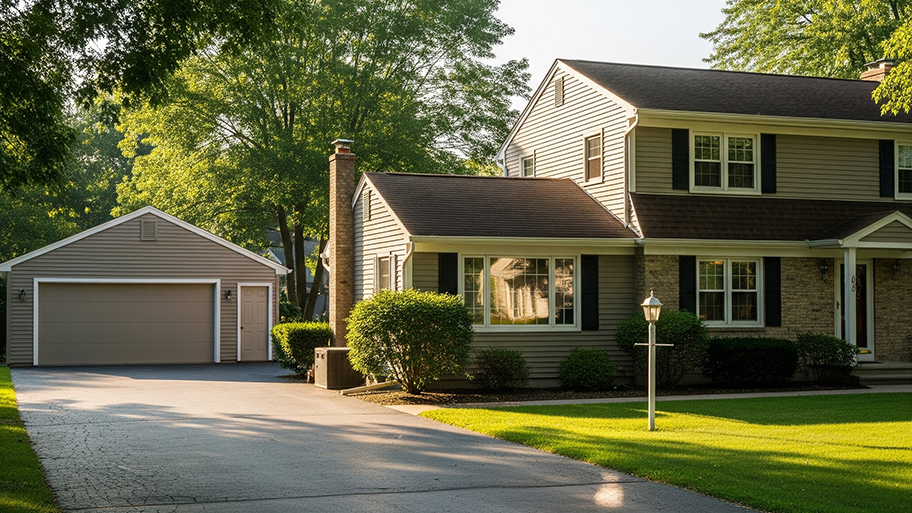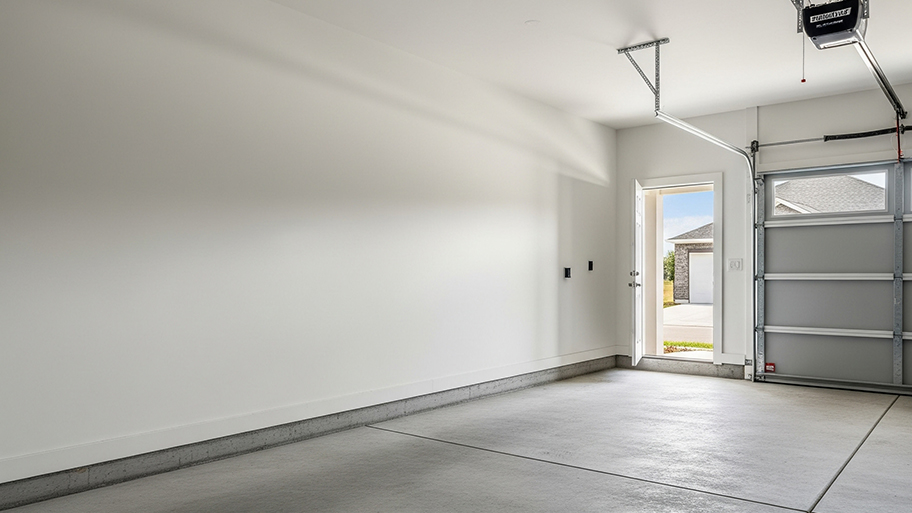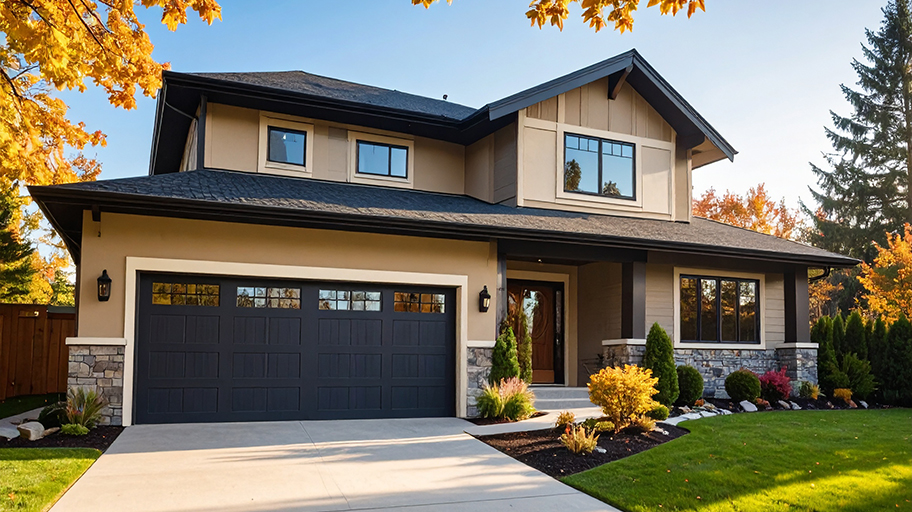
The cost to build a detached garage depends on the size, materials, labor, and more. Read this guide to learn more about detached garage costs.
Cracks and dents? Repairing a concrete garage floor is easier than you think.


Over the years, your concrete garage floor may begin to fail. Spills, grease, pressure, and impact can all damage your concrete floor. A full garage floor replacement can be costly. Fortunately, repairing a concrete floor is an easy DIY project. With the right tools and process, repairing the concrete floor in a standard one-car garage only takes two hours.
Using the right materials is key to successfully repairing a concrete garage floor by yourself. Different resurfacers often have different curing times. Thoroughly read the labels to see if your resurfacer requires additional priming.
Another key material to your project is the sealer used for crack repairs. Look for a professional-grade, epoxy-based product because it will be harder and stronger than regular concrete once cured. Epoxy-based sealers also provide additional waterproofing.
Empty your garage to ensure you can reach every corner of the floor. If you only plan on repairing a small portion of the concrete floor, clean up that area and remove obstacles.
Start by cleaning your floor. Scrub the floor using the concrete cleaner to remove stains and grease. You can also DIY a cleaning solution by mixing up laundry detergent and water. After cleaning the individual spots, power wash with biodegradable detergent for a full garage clean-up.
Wait until the concrete is dry before you move forward with repairs.

Now, you are ready to repair the smaller damages in your concrete garage floor. Find the small cracks and pits and mark them with a pencil. These pits should be 1/4 inch or deeper. Measure with a pencil and circle them.
Using a chisel, remove loose concrete around larger cracks. Sweep up any debris and clean the edges with a steel brush. The cleaner your work surface is, the smoother it will look after patching. A clean surface also allows a stronger bond between existing concrete and the patching you’re about to do.
Use your epoxy-based filler to fill up smaller dents and cracks. Most fillers come in a tube-shaped applier and are easy to use. Make sure to flatten the surface after the cracks are filled.
For larger damages, mix up a sufficient batch of concrete resurfacer or your chosen patching material. We recommend using a power mixing tool for a higher consistency. Use minimum water to maintain a workable fluidity without making the mixture too thin or runny. Pour the mixture onto the damaged area and Scrape off any excess so the repair flushes with the surrounding floor.
Start by laying down a weather strip by the garage door to create a dam for the resurfacer. Next, mix up the concrete resurfacer and spread it with a squeegee. Since resurfacers harden quickly, you need someone to mix the resurfacer while you are applying it to the concrete. Once you’ve covered the entire floor, smoothen along the side walls by pulling the squeegee toward you.
Wait several hours for the finished slab to harden. If you notice any pits or bubbles, consider applying a second layer. If the weather is hot, mist the hardened surface so the resurfacer fully hardens properly.

Test your finished slab with water to check for low points. In most cases, low slabs are neglectable. Therefore, if you see small puddles forming in the garage, don’t fret. However, if you see large amounts of water collecting, you should try to level out the surface.
Prepare the surface with a concrete leveler primer. Then, mix the leveler with water and cover the garage floor using a long-handled squeegee. Make sure you apply enough leveler to fulfill the necessary depression your garage floor requires.
Let gravity settle the leveler. Depending on the product, a smooth, solid surface can take as few as four hours to form. However, you should wait at least 24 hours before rolling a car back into the garage.
When you repair a garage floor, you should also consider any upgrades you’d like to do because you already have the garage emptied. For example, you can add additional flooring to insulate your garage or use a waterproof primer at the end for extra protection.
Repairing a concrete garage floor is a beginner’s task and can be done within half a day if you use fast-curing products. However, if the floor has major damage, such as structural damage caused by the ground sinking and settling, you should hire a flooring contractor.
A complete replacement of your concrete garage floor costs $2,000 on average, or $2 to $7 per square foot. Additional costs will be incurred when structural testing, mold remediation, and other add-on services are required.
From average costs to expert advice, get all the answers you need to get your job done.

The cost to build a detached garage depends on the size, materials, labor, and more. Read this guide to learn more about detached garage costs.

The cost to drywall a garage depends on the size, materials, labor, and more. This guide will help you budget for installing drywall in your garage.

A sound garage roof is important for protecting against water damage and foundational disrepair. If you need to replace your garage roof, this guide shows you what to expect to pay for materials and labor based on specific factors.

No gym membership? No problem! Create the ultimate home gym with these amazing garage home gym ideas.

Asking yourself, "Who do I call to install power in my garage?" You've got options. Read on to learn who to hire to add electricity to your garage.

Discover the perfect dimensions for your 2-car garage to maximize its potential, allowing for car storage to extra space for laundry or hobbies.